选择热点
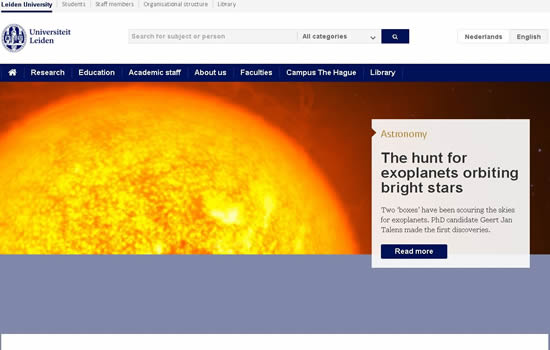 荷兰莱顿大学
荷兰莱顿大学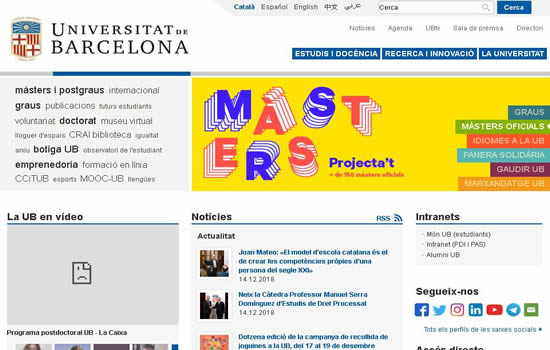 西班牙巴塞罗那大学
西班牙巴塞罗那大学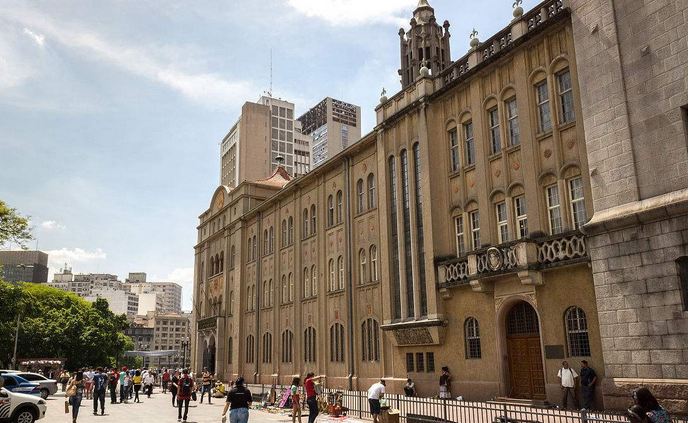 巴西圣保罗大学 University of Sao Paulo, Brazil
巴西圣保罗大学 University of Sao Paulo, Brazil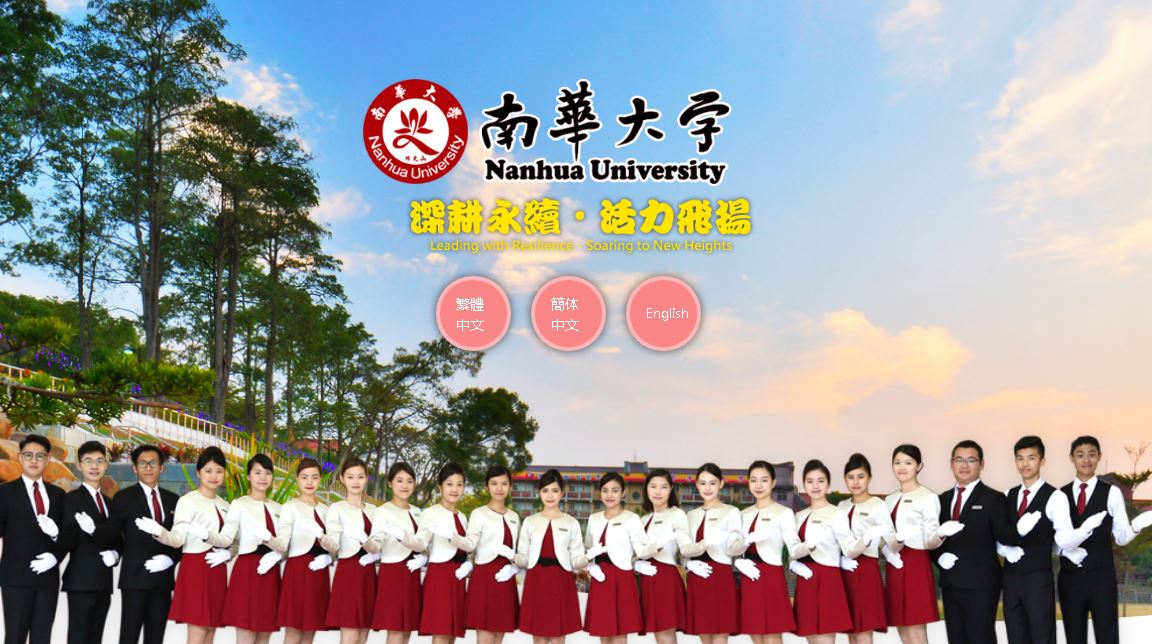 台湾南华大学 University of South China in Taiwan
台湾南华大学 University of South China in Taiwan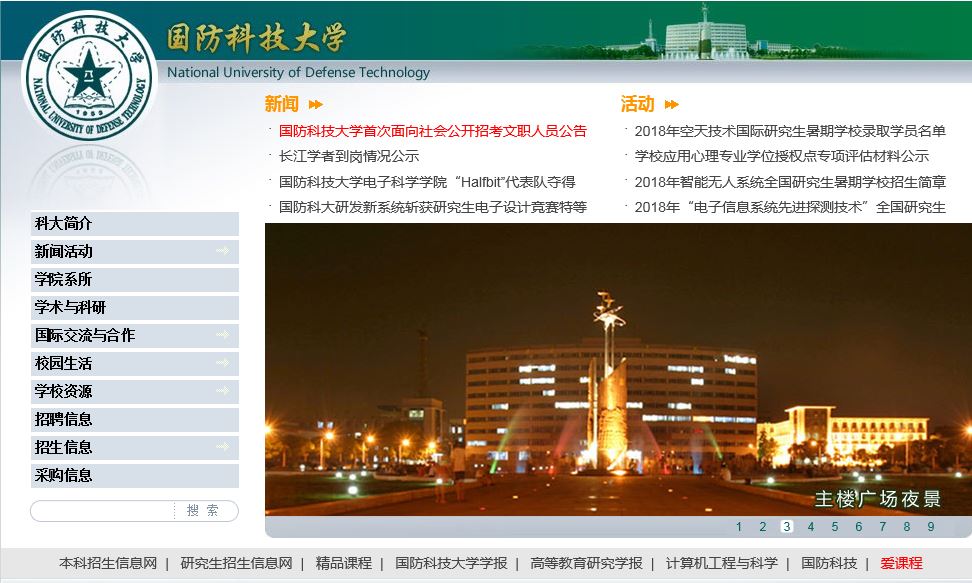 科技大学 National University of Defense Technology
科技大学 National University of Defense Technology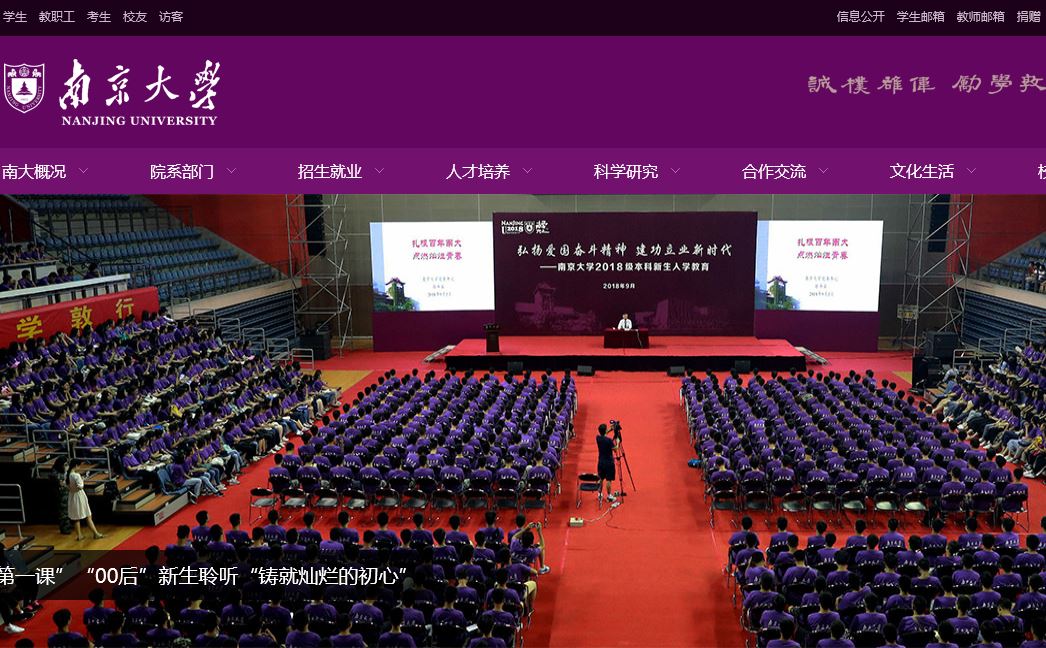 南京大学 Nanjing University
南京大学 Nanjing University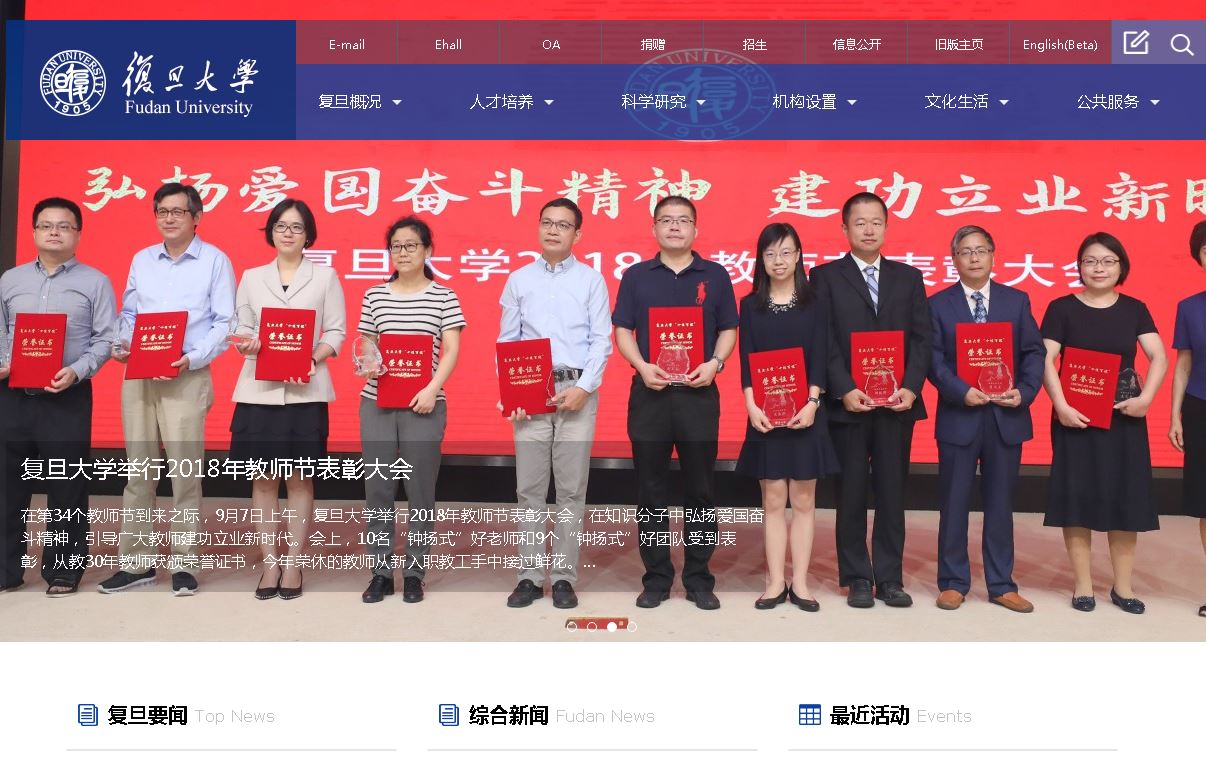 上海复旦大学 Fudan University
上海复旦大学 Fudan University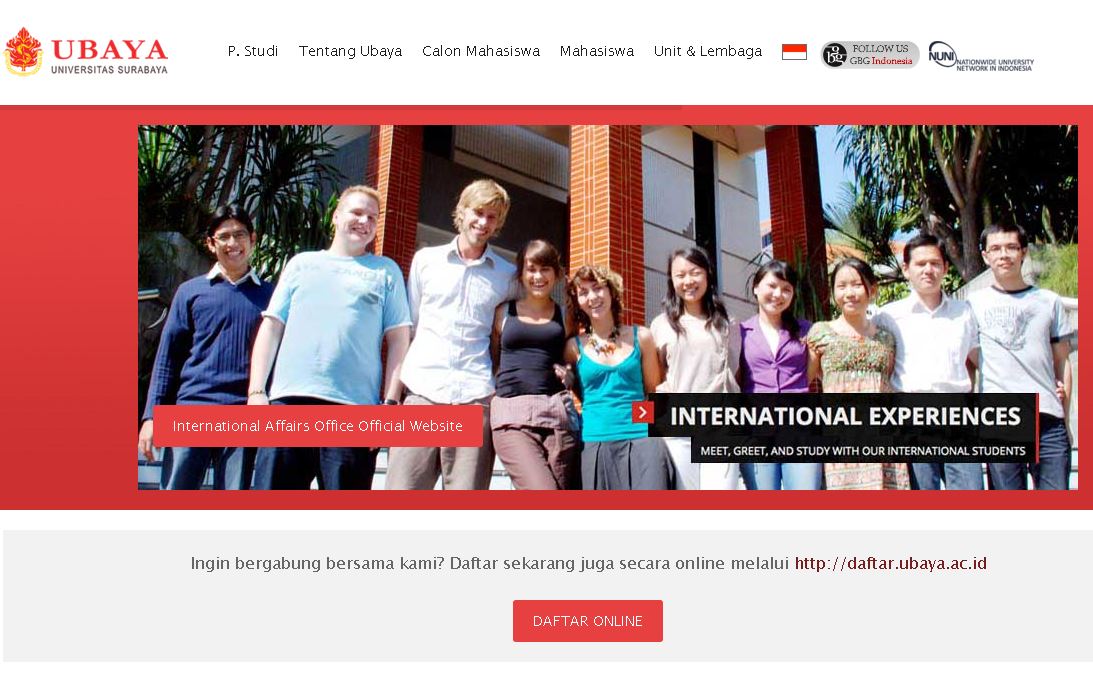 泗水大学(Ubaya)
泗水大学(Ubaya)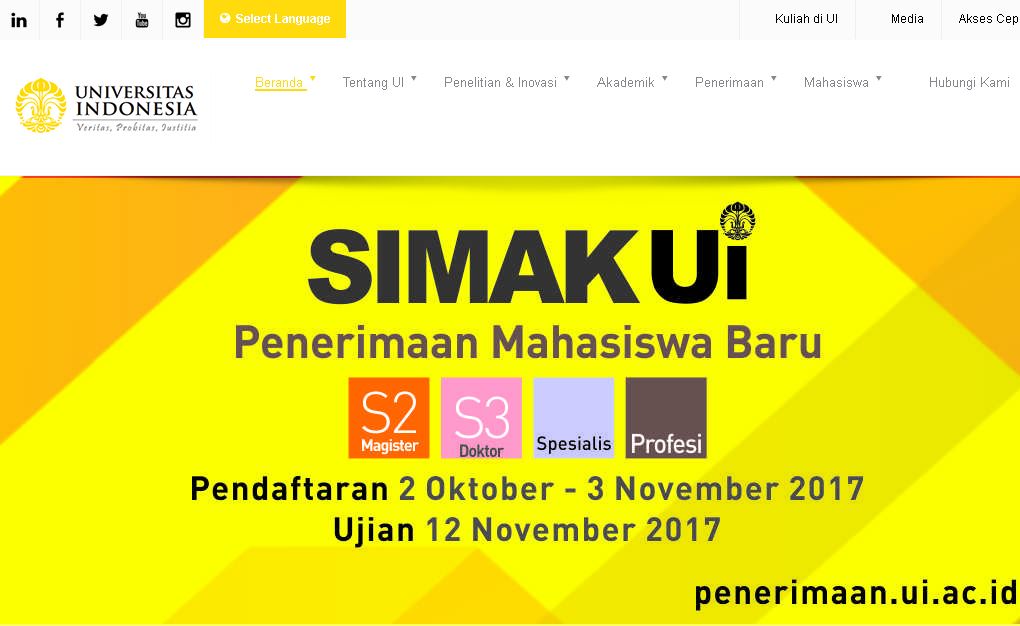 印尼大学 universitas indonesia
印尼大学 universitas indonesia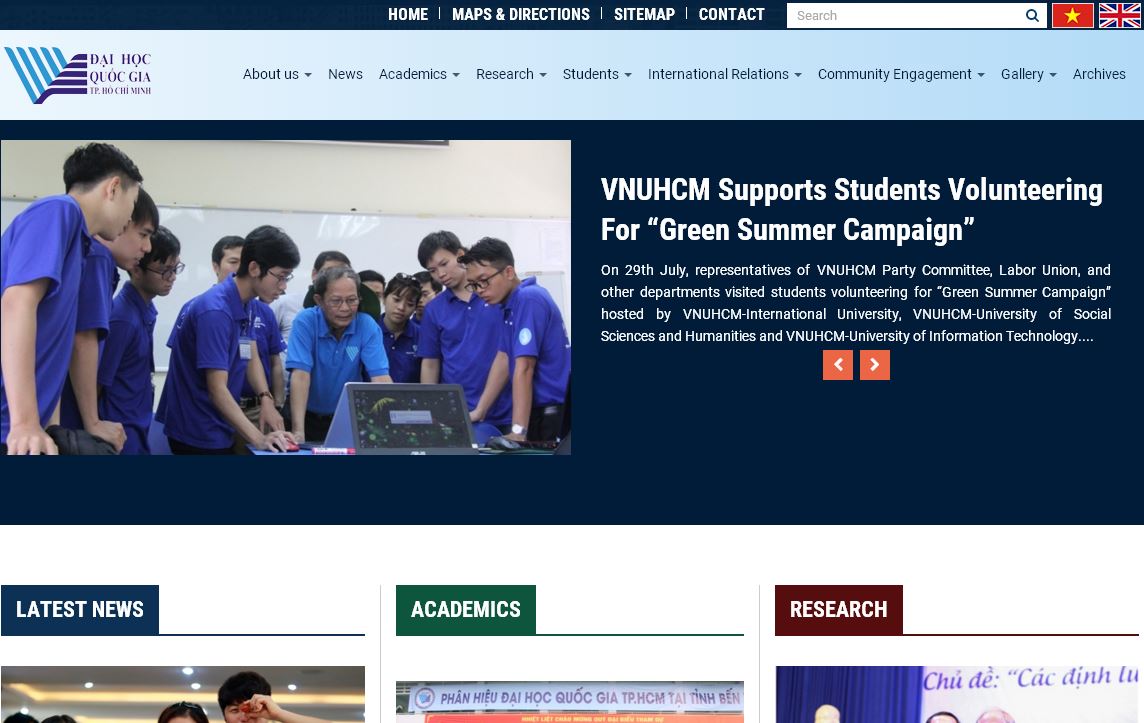 越南某大学 Vietnam National University
越南某大学 Vietnam National University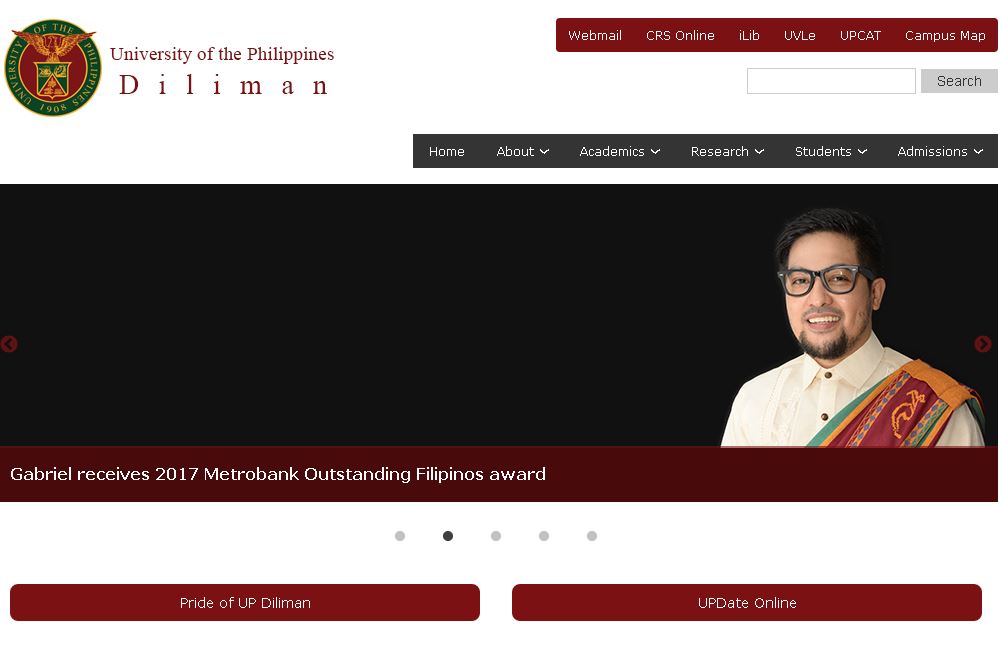 菲律宾大学 University Of The Philippines
菲律宾大学 University Of The Philippines
在京东高科技工厂,看人类未来的可怕预言
发布时间:2025-01-06
来源:大学网站
No young artist has a sharper view of the future than Cao Fei.
Her dreamlike visions of China’s full-tilt economic development, and the social dislocation and environmental abasement that have come with it, were the most beguiling and unnerving parts of her acclaimed midcareer retrospective at MoMA PS1 in 2016.
没有哪个年轻艺术家能像曹斐这样,对未来有如此清晰的看法。
在2016年纽约现代艺术博物馆(MoMA)PS1的那场备受赞誉的生涯中期回顾展上,她对中国如火如荼的经济发展,以及随之而来的社会混乱和环境恶化进行的梦境般构想,是其中最令人迷醉和不安的部分。
Ms.
Cao, 40 (her full name is pronounced TSOW fay), revisits those themes with her new video work, Asia One,” a mournfully beautiful hybrid of economic forecast and tragic love story, now on view at the Solomon R.
Guggenheim Museum as part of the group exhibition One Hand Clapping.
”40岁的曹斐用她新的录像作品 亚洲一号 (Asia One)重温了这些主题,这部美丽而令人悲伤的作品混合了经济预测和悲剧爱情故事,正在古根海姆博物馆作为群展单手鼓掌”(One Hand Clapping)的一部分展出。
Asia One” transports viewers to a high-tech warehouse near Shanghai, staffed by only two workers — a smiling porcelain robot nearby scans their every move — who oversee the automated distribution of hundreds of thousands of packages.
The near-absence of human workers may feel like the stuff of fantasy, but it’s not.
The film was shot principally at the newest warehouse of JD.
com, a $48 billion company often (inexactly) called the Amazon of China, where robots handle almost everything.
亚洲一号 将观众带到上海附近的一个高科技仓库,那里只有两名工作人员——一个微笑的瓷白色机器人在附近监测他们的一举一动——工人负责监督成千上万包裹的自动分发。
人类工人几乎不存在,可能会让这感觉像是幻想,但并非如此。
影片主要是在京东最新的仓库拍摄的,这家价值480亿美元的公司经常(不准确地)被称为中国的亚马逊,那里几乎所有事务都由机器人处理。
Ms.
Cao’s fixation on economics, labor and development is rare among artists, and I was eager to discuss the plausibility of Asia One” with someone who had studied China’s industries up close.
So I invited a New York Times colleague, David Barboza, who was The Times’s Shanghai bureau chief from 2008 to 2015, to join me at the Guggenheim, where we discussed what the Guggenheim work has to say about a future we’re already moving into.
These are edited excerpts from that conversation.
曹斐对经济、劳动和发展等主题的着迷在艺术家中是罕见的,我希望与一个近距离研究过中国工业的人讨论 亚洲一号 的可信性。
因此,我邀请了 纽约时报 的一位同事张大卫(David Barboza)和我一起来到古根海姆,他在2008年至2015年期间担任 纽约时报 上海分社社长,我们讨论了古根海姆的这件作品对我们已经在步入的未来的看法。
以下是此次谈话的节选。
JASON FARAGO Asia One” is set in a China of the near future — but like so many great speculative fictions, it’s really about the present.
In economic terms, how did you perceive Asia One”: more like science fiction or more like real life?
杰森·法拉戈(JASON FARAGO) 亚洲一号 以不久之后的中国为背景——但就像许多伟大的幻想小说一样,它实际上是关于现在的。
从经济角度来看,你如何看待 亚洲一号 :更像科幻小说还是更像现实生活?
DAVID BARBOZA I’ve been to a lot of Chinese factories; that was one of my favorite things to do in China, actually.
As an American, you have a natural interest in seeing all the hidden steps that go into making, say, a Nike sneaker or an electronic cigarette.
张大卫 我去过很多中国工厂;事实上,这是我在中国最喜欢做的事情之一。
作为一个美国人,你自然有兴趣看到制作耐克运动鞋或电子烟这些东西的所有隐藏步骤。
And I have been to one of JD’s logistics centers, much like the one where Asia One” was shot.
There were certainly more than just two employees.
But you could see, as the boxes flew down the conveyor belts, the beginnings of this trend toward fewer and fewer people doing the work.
In that sense, there was nothing surprising to me in the look or feel of this futuristic” distribution center.
我去过京东的一个物流中心,很像 亚洲一号 中拍摄的那个。
当然不止两名员工。
但是你可以看到,当盒子从传送带上传下去时,越来越少人工的趋势正在开始。
从这个意义上来说,这个未来主义”配送中心的外观和感觉并不让我意外。
Maybe the reason Ms.
Cao wanted to shoot there is that its lack of hustle and bustle is so jarring.
China is a country with 1.
4 billion people, and my own experience in visiting a manufacturing or distribution site was to be awed by the sheer mass of humanity you encounter.
Everything is the biggest, with the most people.
Now, though, China is undergoing a big demographic shift, with a steadily declining population of young people.
In some parts of the country, there are already shortages of migrant labor.
也许曹斐想在那里拍摄的原因是,缺乏喧嚣噪音让那里非常不和谐。
中国是一个拥有14亿人口的国家,我自己参观制造或分销场所的经历,就会让你对你所遇到的人类的数量感到敬畏。
一切都是最大的,有最多的人。
然而,中国现在正在经历一场大的人口结构变化,年轻人的数量正在稳步下降。
在这个国家的一些地方已经出现了外来人口劳动力短缺的情况。
FARAGO Hence the turn to automation.
In the empty factory of Asia One” there’s a banner that reads Man and Machine Go Hand in Hand, and Create Miracles!
” Which is a real JD slogan.
法拉戈 因此有了向自动化的转变。
在 亚洲一号 的空工厂里有一面横幅,上面写着人和机器携手并进,创造奇迹!
”这是一个真的京东口号。
BARBOZA But if robots do too much, where are all the people going to work?
China is moving ahead so fast with AI, faster than the United States or Europe, and yet the ramifications there could be the most troubling — a potential for massive dislocation.
张大卫 但如果机器人做得太多,那么所有的人会去哪里工作呢?
中国在人工智能领域的发展如此之快,超过了美国或欧洲,但其后果可能是最令人不安的——有可能出现大规模的混乱。
FARAGO Ms.
Cao is from Guangzhou, the megacity of the industrial Pearl River Delta, and her career as an artist has run parallel to China’s arrival on the global stage.
My favorite work of hers before this one was Whose Utopia” (2006), which she shot in a light bulb factory.
It beautifully humanized the migrant workers who made the world’s cheap consumer goods; they formed a band, talked about their dreams.
法拉戈 曹斐来自工业化的珠江三角洲的大城市广州,她的艺术生涯与中国站上全球舞台的过程并行不悖。
在此之前,她的作品中我最喜欢的是她在一家灯泡厂拍摄的 谁的乌托邦 (2006)。
它通过美丽的方式,给制造世界上的廉价消费品的农民工形象赋予了人性;他们组成了一个乐队,谈论他们的梦想。
In Asia One,” China is no longer the back office but the main stage.
The factory is gleaming — cardboard boxes dance across the screen as if they were in a Busby Berkeley musical — but no one is there.
These two workers appear to be middle-class, and they’re managing this hugely complex set of logistical operations.
Yet they might as well be the last people on earth, and they are under constant surveillance.
在 亚洲一号 中,中国不再是后台,而是主要的舞台。
工厂闪闪发光——纸板盒在屏幕上飞舞,就像在巴士比·柏克莱(Busby Berkeley)的音乐剧里一样——但那里没有人。
这两名工人似乎是中产阶级,他们正在管理这一极其复杂的物流业务。
然而,他们也可能是地球上的最后一批人,并且他们受到持续的监视。
BARBOZA Ten years ago Chinese manufacturing was all about exports.
This work is much more representative of the shift in Chinese business toward a domestic consumer class.
张大卫 十年前,中国的制造业几乎都与出口有关。
这项工作在中国企业向国内消费阶层的转变过程中更具代表性。
China is also going full steam ahead with facial recognition technologies, mobile payments and mass surveillance.
There are cameras everywhere, CCTV everywhere.
At lots of the factories I visited, companies had installed fingerprint recognition to better track and authenticate who was visiting the site.
And Ms.
Cao is playing with that — the female worker has a bar code tattooed on her wrist, as if she were the product rather than the employee.
中国也在全力推进面部识别技术、移动支付和大规模监控。
到处都有摄像头,到处都是监控系统。
在我访问的许多工厂中,公司已安装了指纹识别功能,以便更好地跟踪和验证进入工厂的人员。
曹斐利用了这一点——那名女工手腕上有条形码刺青,好像她是产品而不是雇员。
FARAGO This is a future where everything is constantly scanned and scored: the goods but also the workers.
The smiling robot scans the male protagonist and gives him a low trust score.
”法拉戈 这是一个一切都在不断被扫描和评分的未来:既包括货物,也包括工人。
微笑的机器人扫描男主角,给了他一个很低的信任分数”。
BARBOZA That’s already happening, too, in China with the social credit system.
Outdoor surveillance cameras can record the image of a person’s face and know whether that individual has an unpaid parking ticket, has poor credit history or has made some radical comments online.
This happens first in the factory, because the factory is the most controlled space, with cameras everywhere, recording every moment.
张大卫 中国的社会信用体系中已经发生了这种情况。
室外监控摄像机可以记录一个人的脸部图像,并知道此人是否有未付的停车罚单、信用记录不良或在网上有过激进的言论。
这种事首先发生在工厂,因为工厂是最受控制的空间,到处都是摄像头,每时每刻都在记录。
FARAGO Yet the film’s heroes exhibit no outrage.
Asia One” is shot through with pathos; it’s a thwarted romance as much as an industrial drama.
The woman is so desperate for affection that at one point she hugs the robot.
But she and the man can’t connect; he has to use his digital goggles to scan her face for emotions.
There is no love in the age of data.
法拉戈 然而影片的主角们没有表现出任何愤怒。
亚洲一号 是在感伤之中拍摄的;它既是一部工业剧,又是挫败的爱情片。
这个女人非常渴望感情,以至于有一次拥抱了机器人。
但她和那个男人无法产生联系;他必须用他的数码头具扫描她的脸上的情绪。
在数据时代是没有爱的。
BARBOZA About a decade ago, a migrant worker might have worked three years in a factory, and then returned home to find a spouse or settle closer to home.
A factory job allowed them to save money, and that’s obviously changed in recent years, as China’s economy has grown along with consumption.
So I think the actors in this film do, in a way, represent what I have seen in China’s factory zones: this is now a more permanent state, and while the work may be mind-numbing, people are more resigned to it.
张大卫 大约十年前,一个农民工可能在一家工厂工作三年,然后回老家结婚或在离家更近的地方定居。
一份工厂的工作让他们可以存够钱;随着中国的经济与消费一起增长,这在最近几年发生了明显的变化。
因此,我认为这部影片中的演员在某种程度上确实代表了我在中国工厂地区所看到的:这成了一种更永久的状态,虽然工作可能让人麻木,但人们对它却更加顺从。
FARAGO At the Guggenheim, Ms.
Cao is screening Asia One” within an installation that features much more low-tech equipment, like a motorized rickshaw loaded with packages.
There’s also a second film she made, a documentary, that shows couriers high-tailing JD deliveries to customers across Beijing.
This is the other side of the contemporary factory: the migrant laborers who ferry clothes or baby formula or consumer electronics from the automated site to customers.
法拉戈 在古根海姆,曹斐是在一个装置作品中播放 亚洲一号 的,装置中有许多很低科技的设备,比如装载包裹的机动三轮车。
里面还有一部影片,是她制作的一部纪录片,展示快递员把京东的货品送往北京各处的情景。
这是现代工厂的另一面:农民工从自动化站点向顾客递送衣服、婴儿奶粉或电子消费产品。
BARBOZA The documentary shows that the final steps of this logistics chain are still more reliant on humans than you would expect.
When JD began operating some years ago, its couriers were delivering goods on motorbikes — or even bicycles, with your packages taped to the back!
张大卫 这部纪录片显示出,这个物流链的最后一步仍然比你预料的更依赖人类。
几年前,当京东开始运营时,它的快递员用摩托车甚至自行车运送货物,你的包裹就捆在车后面!
Probably 90 percent of these delivery workers are migrants from elsewhere in China, and in Ms.
Cao’s project you see the delivery men shoving odd-shaped packages into a van, racing through the alleyways of Beijing.
And she takes you home with some of these people, where several generations live in a one-room apartment.
大概90%的送货员是来自中国其他地方的外来打工者,在曹斐的作品里,你可以看到送货员将奇怪形状的包裹推进一辆货车,在北京的小巷里飞驰。
她带你走进其中一些人的家,一间一室公寓里可能住了几代人。
When you put the two films together, you have this portrait of a Chinese economy with a lot of automation, but still a lot of heavy lifting and arduous tasks.
And she shows you the challenges for the human worker in 2018, and the coming challenges of isolation, loneliness and perhaps joblessness — or the absence of jobs.
And of technological control.
当你把这两部影片放在一起时,你看到的是一幅中国经济的肖像,有很多自动化,但是仍然有很多繁重的工作和费力的任务。
她向你展示了2018年人类工人面临的挑战,以及即将到来的隔绝、孤独,也许还有失业——或者工作消失带来的挑战。
以及技术的控制。
FARAGO Toward the start of Asia One,” as a robotic vehicle glides across the empty factory floor, Ms.
Cao plays a clip from a Mao-era patriotic song: an early ode to logistical infrastructure, with a soprano singing about piers and cranes and the Great Leap Forward.
There are also some unexpected dance sequences, too, with performers sliding down chutes on the factory floor, that have the feel of a Maoist pageant.
法拉戈 在 亚洲一号 的开头,当一个机器人载具在空荡的工厂地板上滑行时,曹斐播放了毛泽东时代的爱国歌曲片段:一首关于物流基础设施的早期颂歌,一名女高音歌唱着码头、起重机和大跃进。
也有一些意想不到的舞蹈片段,表演者在工厂的地板上滑下滑梯,有一种毛派选美比赛的感觉。
In the U.
S.
we think of shipping and robotics as economic questions, but of course they are deeply political in China.
And this gets to why I think Asia One” is such a monumental work: Ms.
Cao somehow convinced one of China’s most valuable companies, with deep government ties, to let her shoot this tragic portrait of China’s future — our future, too — right inside its flagship warehouse.
在美国,我们认为货运和机器人是经济问题,但当然,它们在中国具有深刻的政治意义。
这就是为什么我认为 亚洲一号 是一部伟大的作品:曹斐用某种方法说服了一家中国最具价值的、与政府关系密切的公司,让她得以在旗舰仓库里拍摄这幅中国未来——我们的未来——的悲剧画像。
BARBOZA Whether you’re a private company or a state-owned company in China, everyone knows that you need to be on the same page as the government.
You have to seem to promote the interests that they want to promote, even if you don’t believe in them.
张大卫 无论是中国的私营公司还是国有企业,每个人都知道你需要和政府站在同一条战线上。
即使你不相信他们,你也必须看起来在推动他们想要推动的利益。
And in Asia One,” Ms.
Cao invests this empty factory with this romantic, heroic, Cultural Revolution-style rhetoric.
You’re really working for the benefit of the company and its shareholders, but you have to fuse that with national priorities and ambitions.
It’s all about the goals for the nation.
在 亚洲一号 里,曹斐用这种浪漫的、英雄主义的、文化大革命风格的修辞来描绘这家空旷的工厂。
你的确在为公司及其股东的利益工作,但是你必须将这一点与国家的优先事项和雄心结合起来。
一切都是为了国家的目标。
FARAGO Liu Qiangdong, the chief executive of JD, recently said that China can realize the dream of Communism in our generation,” which is not what we usually hear from billionaires.
But the old Marxist dream that robots will free us from the drudgery of labor doesn’t convince Ms.
Cao: They seem to have subjugated the two heroes instead, and stunted their capacity to feel and to love.
法拉戈 京东首席执行官刘强东最近表示,中国可以在我们这一代实现共产主义的梦想”,我们通常不会从亿万富翁口中听到这样的话。
但是,马克思主义关于机器人将使我们从繁重的劳动中解放出来的古老梦想,并没有说服曹斐:它们似乎反而征服了这两位主角,并阻碍了他们去感受和爱的能力。
BARBOZA To me, Ms.
Cao is trying to portray that, even in a dehumanized environment like the automated warehouse, you need that inspiration or that order from up high.
And who knows, maybe the idea is that these two characters make themselves able to cope with this need, this illusion that they are part of something bigger.
You know, it’s a beautiful dance.
We’re doing something for the party.
We’re doing something for the country.
Because the future is going to be very challenging.
张大卫 对我来说,曹斐试图描绘的是,即使在自动化仓库这样非人化的环境中,你也需要来自高层的启发或命令。
谁知道呢,也许这个想法是,这两名工人让自己能够应付这种需求,幻想他们是某种更宏大的东西的一部分。
就像,这是一支美丽的舞蹈。
我们正在为党做一些事。
我们在为国家做一些事。
因为未来将会非常具有挑战性。
【在京东高科技工厂,看人类未来的可怕预言查看网站:[db:时间]】
Her dreamlike visions of China’s full-tilt economic development, and the social dislocation and environmental abasement that have come with it, were the most beguiling and unnerving parts of her acclaimed midcareer retrospective at MoMA PS1 in 2016.
没有哪个年轻艺术家能像曹斐这样,对未来有如此清晰的看法。
在2016年纽约现代艺术博物馆(MoMA)PS1的那场备受赞誉的生涯中期回顾展上,她对中国如火如荼的经济发展,以及随之而来的社会混乱和环境恶化进行的梦境般构想,是其中最令人迷醉和不安的部分。
Ms.
Cao, 40 (her full name is pronounced TSOW fay), revisits those themes with her new video work, Asia One,” a mournfully beautiful hybrid of economic forecast and tragic love story, now on view at the Solomon R.
Guggenheim Museum as part of the group exhibition One Hand Clapping.
”40岁的曹斐用她新的录像作品 亚洲一号 (Asia One)重温了这些主题,这部美丽而令人悲伤的作品混合了经济预测和悲剧爱情故事,正在古根海姆博物馆作为群展单手鼓掌”(One Hand Clapping)的一部分展出。
Asia One” transports viewers to a high-tech warehouse near Shanghai, staffed by only two workers — a smiling porcelain robot nearby scans their every move — who oversee the automated distribution of hundreds of thousands of packages.
The near-absence of human workers may feel like the stuff of fantasy, but it’s not.
The film was shot principally at the newest warehouse of JD.
com, a $48 billion company often (inexactly) called the Amazon of China, where robots handle almost everything.
亚洲一号 将观众带到上海附近的一个高科技仓库,那里只有两名工作人员——一个微笑的瓷白色机器人在附近监测他们的一举一动——工人负责监督成千上万包裹的自动分发。
人类工人几乎不存在,可能会让这感觉像是幻想,但并非如此。
影片主要是在京东最新的仓库拍摄的,这家价值480亿美元的公司经常(不准确地)被称为中国的亚马逊,那里几乎所有事务都由机器人处理。
Ms.
Cao’s fixation on economics, labor and development is rare among artists, and I was eager to discuss the plausibility of Asia One” with someone who had studied China’s industries up close.
So I invited a New York Times colleague, David Barboza, who was The Times’s Shanghai bureau chief from 2008 to 2015, to join me at the Guggenheim, where we discussed what the Guggenheim work has to say about a future we’re already moving into.
These are edited excerpts from that conversation.
曹斐对经济、劳动和发展等主题的着迷在艺术家中是罕见的,我希望与一个近距离研究过中国工业的人讨论 亚洲一号 的可信性。
因此,我邀请了 纽约时报 的一位同事张大卫(David Barboza)和我一起来到古根海姆,他在2008年至2015年期间担任 纽约时报 上海分社社长,我们讨论了古根海姆的这件作品对我们已经在步入的未来的看法。
以下是此次谈话的节选。
JASON FARAGO Asia One” is set in a China of the near future — but like so many great speculative fictions, it’s really about the present.
In economic terms, how did you perceive Asia One”: more like science fiction or more like real life?
杰森·法拉戈(JASON FARAGO) 亚洲一号 以不久之后的中国为背景——但就像许多伟大的幻想小说一样,它实际上是关于现在的。
从经济角度来看,你如何看待 亚洲一号 :更像科幻小说还是更像现实生活?
DAVID BARBOZA I’ve been to a lot of Chinese factories; that was one of my favorite things to do in China, actually.
As an American, you have a natural interest in seeing all the hidden steps that go into making, say, a Nike sneaker or an electronic cigarette.
张大卫 我去过很多中国工厂;事实上,这是我在中国最喜欢做的事情之一。
作为一个美国人,你自然有兴趣看到制作耐克运动鞋或电子烟这些东西的所有隐藏步骤。
And I have been to one of JD’s logistics centers, much like the one where Asia One” was shot.
There were certainly more than just two employees.
But you could see, as the boxes flew down the conveyor belts, the beginnings of this trend toward fewer and fewer people doing the work.
In that sense, there was nothing surprising to me in the look or feel of this futuristic” distribution center.
我去过京东的一个物流中心,很像 亚洲一号 中拍摄的那个。
当然不止两名员工。
但是你可以看到,当盒子从传送带上传下去时,越来越少人工的趋势正在开始。
从这个意义上来说,这个未来主义”配送中心的外观和感觉并不让我意外。
Maybe the reason Ms.
Cao wanted to shoot there is that its lack of hustle and bustle is so jarring.
China is a country with 1.
4 billion people, and my own experience in visiting a manufacturing or distribution site was to be awed by the sheer mass of humanity you encounter.
Everything is the biggest, with the most people.
Now, though, China is undergoing a big demographic shift, with a steadily declining population of young people.
In some parts of the country, there are already shortages of migrant labor.
也许曹斐想在那里拍摄的原因是,缺乏喧嚣噪音让那里非常不和谐。
中国是一个拥有14亿人口的国家,我自己参观制造或分销场所的经历,就会让你对你所遇到的人类的数量感到敬畏。
一切都是最大的,有最多的人。
然而,中国现在正在经历一场大的人口结构变化,年轻人的数量正在稳步下降。
在这个国家的一些地方已经出现了外来人口劳动力短缺的情况。
FARAGO Hence the turn to automation.
In the empty factory of Asia One” there’s a banner that reads Man and Machine Go Hand in Hand, and Create Miracles!
” Which is a real JD slogan.
法拉戈 因此有了向自动化的转变。
在 亚洲一号 的空工厂里有一面横幅,上面写着人和机器携手并进,创造奇迹!
”这是一个真的京东口号。
BARBOZA But if robots do too much, where are all the people going to work?
China is moving ahead so fast with AI, faster than the United States or Europe, and yet the ramifications there could be the most troubling — a potential for massive dislocation.
张大卫 但如果机器人做得太多,那么所有的人会去哪里工作呢?
中国在人工智能领域的发展如此之快,超过了美国或欧洲,但其后果可能是最令人不安的——有可能出现大规模的混乱。
FARAGO Ms.
Cao is from Guangzhou, the megacity of the industrial Pearl River Delta, and her career as an artist has run parallel to China’s arrival on the global stage.
My favorite work of hers before this one was Whose Utopia” (2006), which she shot in a light bulb factory.
It beautifully humanized the migrant workers who made the world’s cheap consumer goods; they formed a band, talked about their dreams.
法拉戈 曹斐来自工业化的珠江三角洲的大城市广州,她的艺术生涯与中国站上全球舞台的过程并行不悖。
在此之前,她的作品中我最喜欢的是她在一家灯泡厂拍摄的 谁的乌托邦 (2006)。
它通过美丽的方式,给制造世界上的廉价消费品的农民工形象赋予了人性;他们组成了一个乐队,谈论他们的梦想。
In Asia One,” China is no longer the back office but the main stage.
The factory is gleaming — cardboard boxes dance across the screen as if they were in a Busby Berkeley musical — but no one is there.
These two workers appear to be middle-class, and they’re managing this hugely complex set of logistical operations.
Yet they might as well be the last people on earth, and they are under constant surveillance.
在 亚洲一号 中,中国不再是后台,而是主要的舞台。
工厂闪闪发光——纸板盒在屏幕上飞舞,就像在巴士比·柏克莱(Busby Berkeley)的音乐剧里一样——但那里没有人。
这两名工人似乎是中产阶级,他们正在管理这一极其复杂的物流业务。
然而,他们也可能是地球上的最后一批人,并且他们受到持续的监视。
BARBOZA Ten years ago Chinese manufacturing was all about exports.
This work is much more representative of the shift in Chinese business toward a domestic consumer class.
张大卫 十年前,中国的制造业几乎都与出口有关。
这项工作在中国企业向国内消费阶层的转变过程中更具代表性。
China is also going full steam ahead with facial recognition technologies, mobile payments and mass surveillance.
There are cameras everywhere, CCTV everywhere.
At lots of the factories I visited, companies had installed fingerprint recognition to better track and authenticate who was visiting the site.
And Ms.
Cao is playing with that — the female worker has a bar code tattooed on her wrist, as if she were the product rather than the employee.
中国也在全力推进面部识别技术、移动支付和大规模监控。
到处都有摄像头,到处都是监控系统。
在我访问的许多工厂中,公司已安装了指纹识别功能,以便更好地跟踪和验证进入工厂的人员。
曹斐利用了这一点——那名女工手腕上有条形码刺青,好像她是产品而不是雇员。
FARAGO This is a future where everything is constantly scanned and scored: the goods but also the workers.
The smiling robot scans the male protagonist and gives him a low trust score.
”法拉戈 这是一个一切都在不断被扫描和评分的未来:既包括货物,也包括工人。
微笑的机器人扫描男主角,给了他一个很低的信任分数”。
BARBOZA That’s already happening, too, in China with the social credit system.
Outdoor surveillance cameras can record the image of a person’s face and know whether that individual has an unpaid parking ticket, has poor credit history or has made some radical comments online.
This happens first in the factory, because the factory is the most controlled space, with cameras everywhere, recording every moment.
张大卫 中国的社会信用体系中已经发生了这种情况。
室外监控摄像机可以记录一个人的脸部图像,并知道此人是否有未付的停车罚单、信用记录不良或在网上有过激进的言论。
这种事首先发生在工厂,因为工厂是最受控制的空间,到处都是摄像头,每时每刻都在记录。
FARAGO Yet the film’s heroes exhibit no outrage.
Asia One” is shot through with pathos; it’s a thwarted romance as much as an industrial drama.
The woman is so desperate for affection that at one point she hugs the robot.
But she and the man can’t connect; he has to use his digital goggles to scan her face for emotions.
There is no love in the age of data.
法拉戈 然而影片的主角们没有表现出任何愤怒。
亚洲一号 是在感伤之中拍摄的;它既是一部工业剧,又是挫败的爱情片。
这个女人非常渴望感情,以至于有一次拥抱了机器人。
但她和那个男人无法产生联系;他必须用他的数码头具扫描她的脸上的情绪。
在数据时代是没有爱的。
BARBOZA About a decade ago, a migrant worker might have worked three years in a factory, and then returned home to find a spouse or settle closer to home.
A factory job allowed them to save money, and that’s obviously changed in recent years, as China’s economy has grown along with consumption.
So I think the actors in this film do, in a way, represent what I have seen in China’s factory zones: this is now a more permanent state, and while the work may be mind-numbing, people are more resigned to it.
张大卫 大约十年前,一个农民工可能在一家工厂工作三年,然后回老家结婚或在离家更近的地方定居。
一份工厂的工作让他们可以存够钱;随着中国的经济与消费一起增长,这在最近几年发生了明显的变化。
因此,我认为这部影片中的演员在某种程度上确实代表了我在中国工厂地区所看到的:这成了一种更永久的状态,虽然工作可能让人麻木,但人们对它却更加顺从。
FARAGO At the Guggenheim, Ms.
Cao is screening Asia One” within an installation that features much more low-tech equipment, like a motorized rickshaw loaded with packages.
There’s also a second film she made, a documentary, that shows couriers high-tailing JD deliveries to customers across Beijing.
This is the other side of the contemporary factory: the migrant laborers who ferry clothes or baby formula or consumer electronics from the automated site to customers.
法拉戈 在古根海姆,曹斐是在一个装置作品中播放 亚洲一号 的,装置中有许多很低科技的设备,比如装载包裹的机动三轮车。
里面还有一部影片,是她制作的一部纪录片,展示快递员把京东的货品送往北京各处的情景。
这是现代工厂的另一面:农民工从自动化站点向顾客递送衣服、婴儿奶粉或电子消费产品。
BARBOZA The documentary shows that the final steps of this logistics chain are still more reliant on humans than you would expect.
When JD began operating some years ago, its couriers were delivering goods on motorbikes — or even bicycles, with your packages taped to the back!
张大卫 这部纪录片显示出,这个物流链的最后一步仍然比你预料的更依赖人类。
几年前,当京东开始运营时,它的快递员用摩托车甚至自行车运送货物,你的包裹就捆在车后面!
Probably 90 percent of these delivery workers are migrants from elsewhere in China, and in Ms.
Cao’s project you see the delivery men shoving odd-shaped packages into a van, racing through the alleyways of Beijing.
And she takes you home with some of these people, where several generations live in a one-room apartment.
大概90%的送货员是来自中国其他地方的外来打工者,在曹斐的作品里,你可以看到送货员将奇怪形状的包裹推进一辆货车,在北京的小巷里飞驰。
她带你走进其中一些人的家,一间一室公寓里可能住了几代人。
When you put the two films together, you have this portrait of a Chinese economy with a lot of automation, but still a lot of heavy lifting and arduous tasks.
And she shows you the challenges for the human worker in 2018, and the coming challenges of isolation, loneliness and perhaps joblessness — or the absence of jobs.
And of technological control.
当你把这两部影片放在一起时,你看到的是一幅中国经济的肖像,有很多自动化,但是仍然有很多繁重的工作和费力的任务。
她向你展示了2018年人类工人面临的挑战,以及即将到来的隔绝、孤独,也许还有失业——或者工作消失带来的挑战。
以及技术的控制。
FARAGO Toward the start of Asia One,” as a robotic vehicle glides across the empty factory floor, Ms.
Cao plays a clip from a Mao-era patriotic song: an early ode to logistical infrastructure, with a soprano singing about piers and cranes and the Great Leap Forward.
There are also some unexpected dance sequences, too, with performers sliding down chutes on the factory floor, that have the feel of a Maoist pageant.
法拉戈 在 亚洲一号 的开头,当一个机器人载具在空荡的工厂地板上滑行时,曹斐播放了毛泽东时代的爱国歌曲片段:一首关于物流基础设施的早期颂歌,一名女高音歌唱着码头、起重机和大跃进。
也有一些意想不到的舞蹈片段,表演者在工厂的地板上滑下滑梯,有一种毛派选美比赛的感觉。
In the U.
S.
we think of shipping and robotics as economic questions, but of course they are deeply political in China.
And this gets to why I think Asia One” is such a monumental work: Ms.
Cao somehow convinced one of China’s most valuable companies, with deep government ties, to let her shoot this tragic portrait of China’s future — our future, too — right inside its flagship warehouse.
在美国,我们认为货运和机器人是经济问题,但当然,它们在中国具有深刻的政治意义。
这就是为什么我认为 亚洲一号 是一部伟大的作品:曹斐用某种方法说服了一家中国最具价值的、与政府关系密切的公司,让她得以在旗舰仓库里拍摄这幅中国未来——我们的未来——的悲剧画像。
BARBOZA Whether you’re a private company or a state-owned company in China, everyone knows that you need to be on the same page as the government.
You have to seem to promote the interests that they want to promote, even if you don’t believe in them.
张大卫 无论是中国的私营公司还是国有企业,每个人都知道你需要和政府站在同一条战线上。
即使你不相信他们,你也必须看起来在推动他们想要推动的利益。
And in Asia One,” Ms.
Cao invests this empty factory with this romantic, heroic, Cultural Revolution-style rhetoric.
You’re really working for the benefit of the company and its shareholders, but you have to fuse that with national priorities and ambitions.
It’s all about the goals for the nation.
在 亚洲一号 里,曹斐用这种浪漫的、英雄主义的、文化大革命风格的修辞来描绘这家空旷的工厂。
你的确在为公司及其股东的利益工作,但是你必须将这一点与国家的优先事项和雄心结合起来。
一切都是为了国家的目标。
FARAGO Liu Qiangdong, the chief executive of JD, recently said that China can realize the dream of Communism in our generation,” which is not what we usually hear from billionaires.
But the old Marxist dream that robots will free us from the drudgery of labor doesn’t convince Ms.
Cao: They seem to have subjugated the two heroes instead, and stunted their capacity to feel and to love.
法拉戈 京东首席执行官刘强东最近表示,中国可以在我们这一代实现共产主义的梦想”,我们通常不会从亿万富翁口中听到这样的话。
但是,马克思主义关于机器人将使我们从繁重的劳动中解放出来的古老梦想,并没有说服曹斐:它们似乎反而征服了这两位主角,并阻碍了他们去感受和爱的能力。
BARBOZA To me, Ms.
Cao is trying to portray that, even in a dehumanized environment like the automated warehouse, you need that inspiration or that order from up high.
And who knows, maybe the idea is that these two characters make themselves able to cope with this need, this illusion that they are part of something bigger.
You know, it’s a beautiful dance.
We’re doing something for the party.
We’re doing something for the country.
Because the future is going to be very challenging.
张大卫 对我来说,曹斐试图描绘的是,即使在自动化仓库这样非人化的环境中,你也需要来自高层的启发或命令。
谁知道呢,也许这个想法是,这两名工人让自己能够应付这种需求,幻想他们是某种更宏大的东西的一部分。
就像,这是一支美丽的舞蹈。
我们正在为党做一些事。
我们在为国家做一些事。
因为未来将会非常具有挑战性。
【在京东高科技工厂,看人类未来的可怕预言查看网站:[db:时间]】
- 上一篇: 挥别炮火与敌意,金门接受中国大陆示好
- 下一篇: 英国出现“快闪店”电商平台
相关阅读
目录列表
资讯列表
英语资讯


共0条评论
网友评论温馨提示:您的评论需要经过审核才能显示,请文明发言!